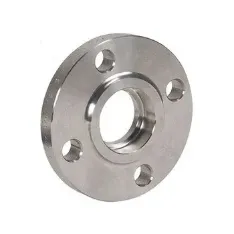-
Cangzhou Yulong Steel Co., Ltd.
-
Phone:
+86 13303177267 -
Email:
admin@ylsteelfittings.com
- English
- Arabic
- Italian
- Spanish
- Portuguese
- German
- kazakh
- Persian
- Greek
- French
- Russian
- Polish
- Thai
- Indonesian
- Vietnamese
- Zulu
- Korean
- Uzbek
- Hindi
- Serbian
- Malay
- Ukrainian
- Gujarati
- Haitian Creole
- hausa
- hawaiian
- Hebrew
- Miao
- Hungarian
- Icelandic
- igbo
- irish
- Japanese
- Javanese
- Kannada
- Khmer
- Rwandese
- Afrikaans
- Albanian
- Amharic
- Armenian
- Azerbaijani
- Basque
- Belarusian
- Bengali
- Bosnian
- Bulgarian
- Catalan
- Cebuano
- China
- China (Taiwan)
- Corsican
- Croatian
- Czech
- Danish
- Esperanto
- Estonian
- Finnish
- Frisian
- Galician
- Georgian
- Kurdish
- Kyrgyz
- Lao
- Latin
- Latvian
- Lithuanian
- Luxembourgish
- Macedonian
- Malgashi
- Malayalam
- Maltese
- Maori
- Marathi
- Mongolian
- Myanmar
- Nepali
- Norwegian
- Norwegian
- Occitan
- Pashto
- Dutch
- Punjabi
- Romanian
- Samoan
- Scottish Gaelic
- Sesotho
- Shona
- Sindhi
- Sinhala
- Slovak
- Slovenian
- Somali
- Sundanese
- Swahili
- Swedish
- Tagalog
- Tajik
- Tamil
- Tatar
- Telugu
- Turkish
- Turkmen
- Urdu
- Uighur
- Welsh
- Bantu
- Yiddish
- Yoruba

Oct . 21, 2024 20:48 Back to list
Cost Analysis of 316 Stainless Steel Pipe per Foot for Budget Planning
Understanding the Cost of 316 Stainless Steel Pipe per Foot
When it comes to industrial applications, various materials are utilized based on their properties and costs. Among these materials, stainless steel, particularly grade 316, is highly favored for its excellent corrosion resistance, durability, and aesthetic appeal. This article delves into the cost of 316 stainless steel pipe per foot, exploring the factors influencing its price, typical costs, and applications.
What is 316 Stainless Steel?
316 stainless steel is an austenitic alloy that contains chromium, nickel, and molybdenum. This unique composition provides exceptional resistance to corrosion, especially in chloride-rich environments, such as coastal areas or chemical processing industries. The addition of molybdenum enhances its resistance to pitting and crevice corrosion, making it an ideal choice for marine applications, food processing, and pharmaceutical industries.
Factors Influencing the Cost of 316 Stainless Steel Pipe
1. Material Grade and Quality The grade of stainless steel significantly impacts the price. ASTM-certified materials and those with higher mechanical properties or added features, such as thicker walls or special finishes, are often more expensive.
2. Size and Dimensions The diameter, wall thickness, and length of the pipe are critical determinants of cost. Larger diameter pipes that require more raw material will naturally be more expensive.
3. Manufacturing Process The method used to manufacture the stainless steel pipes, whether seamless or welded, can influence the price. Seamless pipes, which are produced by extruding metal and do not have seams, are often more costly due to the complex manufacturing process.
4. Supply and Demand Like any commodity, the price of stainless steel is subject to fluctuations based on market conditions. Global demand for stainless steel, trade policies, and the cost of raw materials can affect pricing dynamics.
5. Location and Shipping Geographic location plays a role in pricing. Materials sourced from local suppliers may incur lower transportation costs compared to those imported from overseas. Additionally, regional market conditions can affect pricing.
316 stainless steel pipe cost per foot

6. Surface Finish The surface finish of the pipes can also influence their costs. Polished or specially coated pipes tend to be more expensive than their unpolished counterparts.
Typical Cost Ranges
As of the last update, the cost of 316 stainless steel pipe typically ranges from $10 to $30 per foot, depending on the factors mentioned above. For example, a 1-inch diameter, schedule 40 316 stainless steel pipe might cost around $15 per foot, while a larger, thicker walled pipe could be priced considerably higher. It’s essential to obtain quotes from multiple suppliers to ensure competitive pricing and verify the quality of materials.
Applications of 316 Stainless Steel Pipe
Due to its corrosion-resistant properties, 316 stainless steel pipe is widely utilized across various industries. Common applications include
- Marine Engineering Boats, ships, and offshore installations benefit from 316 stainless steel's resistance to saltwater corrosion. - Chemical Processing Tanks, piping, and heat exchangers in chemical plants often employ 316 pipes due to their durability in harsh environments. - Food and Beverage Industry Sanitary piping for processing food and beverages is often made from 316 stainless steel to meet health standards. - Pharmaceuticals The pharmaceutical industry requires high levels of cleanliness, making 316 pipes ideal for use in drug manufacturing processes.
- Construction Architectural applications leverage the aesthetic qualities and durability of 316 stainless steel, often seen in railings, fittings, and structural applications.
Conclusion
The cost of 316 stainless steel pipe per foot can vary significantly based on multiple factors, including size, manufacturing processes, and market conditions. Understanding these elements can help buyers make informed purchasing decisions and ensure the best value for their needs. Given its exceptional properties, 316 stainless steel remains a leading choice for various industrial applications, underlining its importance in modern engineering and manufacturing. For accurate pricing, it is advisable to consult with suppliers and manufacturers to receive the most current information in line with specific project requirements.
Latest news
-
ANSI 150P SS304 SO FLANGE
NewsFeb.14,2025
-
ASTM A333GR6 STEEL PIPE
NewsJan.20,2025
-
ANSI B16.5 WELDING NECK FLANGE
NewsJan.15,2026
-
ANSI B16.5 SLIP-ON FLANGE
NewsApr.19,2024
-
SABS 1123 FLANGE
NewsJan.15,2025
-
DIN86044 PLATE FLANGE
NewsApr.19,2024
-
DIN2527 BLIND FLANGE
NewsApr.12,2024
-
JIS B2311 Butt-Welding Fittings LR/SR 45°/90° /180°Seamless/Weld
NewsApr.23,2024











